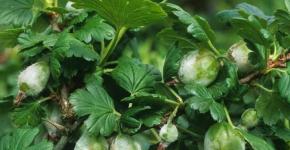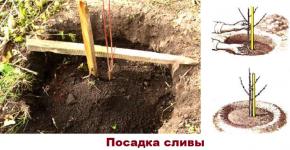What is snow retention and how does it help plants
Many summer residents have long used snow retention techniques on their plots, since plants watered with melt water grow better and more actively, look healthier and get sick less often.
Every year, however, in some areas in recent years less and less, tons of free water pour from the sky. It is not surprising that people have long thought about whether it is possible to somehow use the liquid received as a gift. Basically everything is limited to barrels for collecting rainwater, which are located under the gutters of the roofs. But you can not only collect rainwater, but also hold snow on the site. What is the efficiency of snow accumulation?
What is snow retention
Snowless winters are no longer uncommon in some regions. Snow has become a real shortage. Winter plants, fruit trees and shrubs, as well as perennial grasses suffer from its shortage. Therefore, in arid regions, snow retention began to be used.
Snow retention, or snow accumulation, is a set of measures that help to retain and accumulate snow in fields, arable land and plots of land, they save plants from freezing and increase soil moisture reserves. When the soil is covered with a snow blanket, it is not subject to winter wind erosion, and due to abundant moisture, it is easier to tolerate strong spring winds.
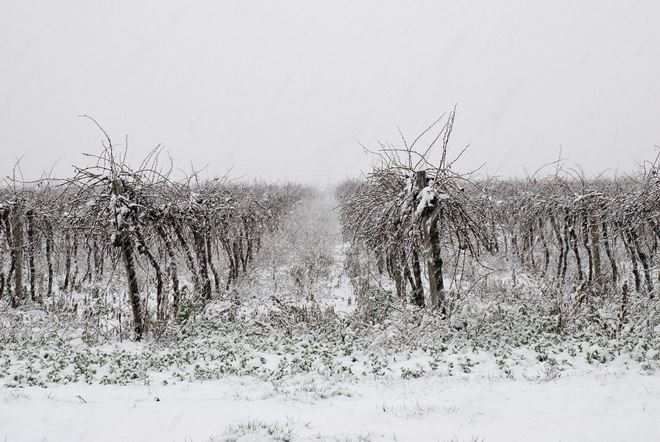
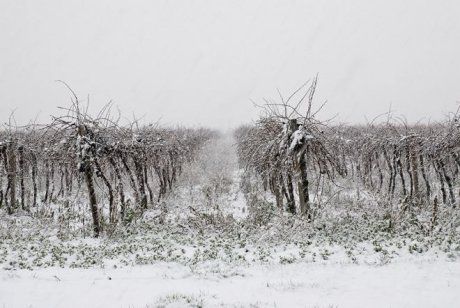
Snow retention significantly increases the productivity of agricultural crops, especially in the steppe and forest-steppe zones with rare snowfalls (Volga region, southern Ukraine, Western Siberia, northern Kazakhstan, etc.). This method is used in the USA, Canada and parts of western Germany and France.
What is useful melt water for plants
You have probably heard about the unique properties of mineral waters from alpine springs? Or that it has recently become popular to drink melted water? If this is useful for humans, then what can we say about plants weakened by frost and lack of nutrients.
Let's say it was a dry and rainy autumn. The ground has not been properly moistened and has not accumulated enough moisture to feed the plants throughout the season. Therefore, she really needs a plentiful snow cover, because 1 kg of fallen snow is almost 1 liter of melt water, which is gradually absorbed into the ground. Snow water impregnates the ground by 1-1.5 m, accumulating and allowing plants to be fed from "underground containers" throughout the winter, spring, and sometimes half of the summer.
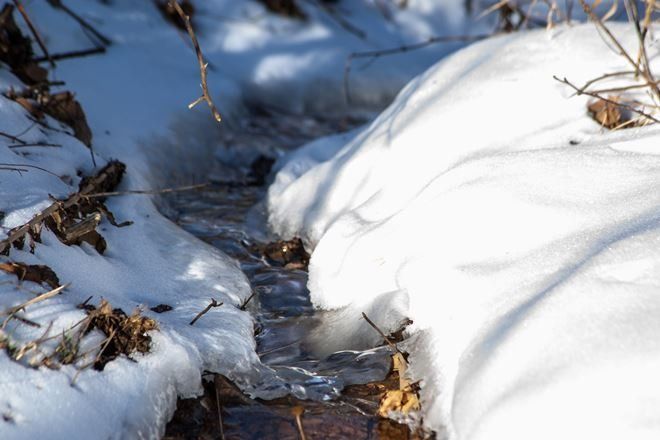
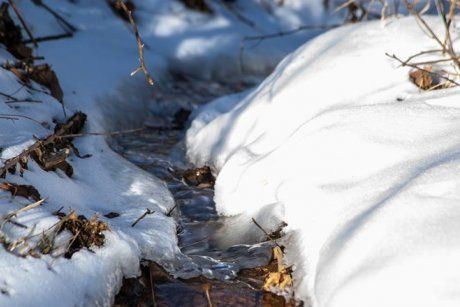
If there is not enough water in some period - in winter, spring or summer - the plant does not go through a normal development cycle. It reacts to the sharp and heavy July rains and begins a new phase of growth of branches and fruits. However, they do not have time to grow up and prepare for the next winter and die in the absence of snow.
Therefore, it is necessary to accumulate snow, melt water in the underground layers. In addition, it is also an excellent fertilizer - 1 kg of snow contains up to 7.4 mg of nitrogen and a little phosphorus. By the way, without melted snow, fertilizing the tree trunks becomes useless, because the nutrients still do not get to the roots.
How much melt water do plants need
There is no single and universal coefficient that allows determining the need of plants for melt water, and cannot be. Too many factors (including unpredictable ones) need to be taken into account throughout the year. In addition, snow itself is a very unstable substance. The density of freshly fallen snow is 0.05 kg/m3, and as it caking, this value increases.
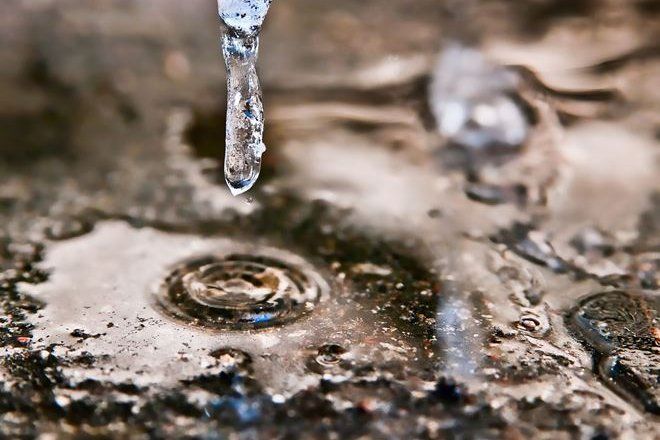
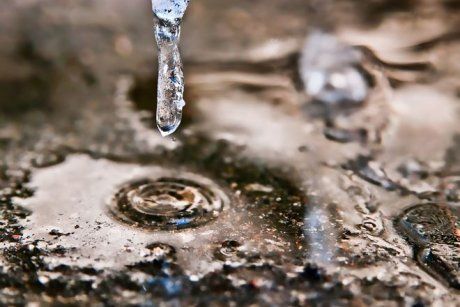
If we take as a basis a conditional 1 cubic meter of snow (which is a cube with a rib length of 1 m, which, you see, is not bad even for a northern winter), then from 50 to 250 liters of melt water can be obtained from it. Everything will depend on how quickly the snow will melt and partially evaporate, and how deep the aquifer lies. In any case, this water will not be superfluous.
It is impossible to say unequivocally about how much water will be saved by site owners who decide to apply snow retention technology. If again we imagine our cubic meter of snow, it is obvious that the soil will receive from 50 to 250 liters of water per 1 sq.m of soil during the season without our participation. This may not be so much, but the plants will always have access to an underground reservoir with water, which was not brought in at once, but allowed to be preserved.
How to properly accumulate snow in the garden, vegetable garden and greenhouse
For horticultural crops, snow is especially important because it protects them from hard frosts, and in spring it provides the first moisture. Snow retention is usually started before the onset of severe frosts (when the weather becomes clear and the snow begins to evaporate) and with the threat of strong winds. It is desirable that the temperature is kept within 0°C, then the effect of snow scattering will be maximum.
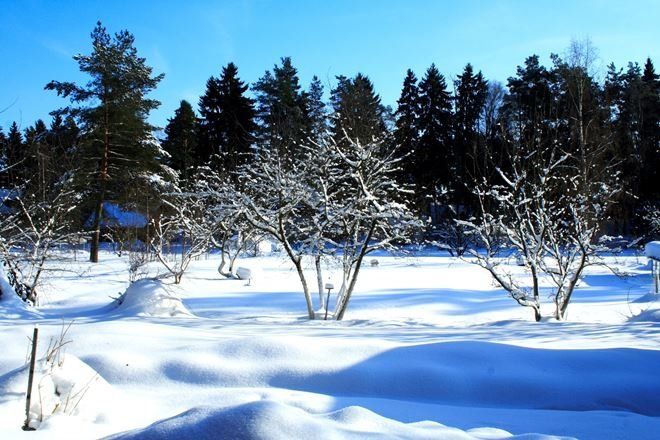
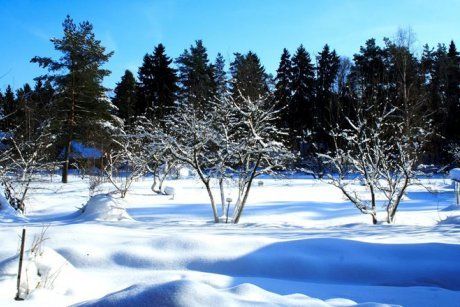
The trunk and bases of the branches of young fruit trees are spudded to protect them from the cold. A snow mound is created around the tree with a diameter equal to the width of the crown projection and a height of about 1 m. Such a snow reserve will contribute to the rapid restoration of the crown's strength.
Strawberry plantings also need more snow, but it must be taken from places where other plants do not grow in order to avoid exposing the roots.
Have you noticed how quickly snow disappears in the city, and how much more slowly it melts in the forest? It's not just the difference in temperature, it's just that in the forest there are many natural obstacles to "wash out" the snow in the form of trees, moss, bushes and branches. Therefore, the easiest way to keep snow on the site to protect flowers, trees and shrubs is to install shields, barriers, or simply make snow mounds around plantings. Usually they are made around the perimeter or installed across the direction of movement of the prevailing winds. Barriers are arranged from boards, logs, reeds, corn or sunflower stalks, raspberry stalks and cut tops. The width of the shield is 1.5-2 m, and the height is about 1 m. For greater efficiency, you can install them in a checkerboard pattern and rearrange as snow accumulates. The hedge also serves as a natural snow retainer. Let the site remain a little “cluttered” for the winter, but it will be snowy, and not completely bare.
Do not forget that each crop needs its own snow depth, which should not exceed a certain level, otherwise the plant may scorch:
- strawberries - early snow up to 90 cm high;
- raspberries - up to 100 cm;
- apple trees, ranetki and sea buckthorn - up to 120 cm;
- currants and gooseberries - bend down to the ground, the height of the snow cover is up to 100-130 cm;
Snow retention in the garden has its own characteristics. You need to start it around February, when there is already enough snow. The specificity concerns cases when the site is located under a slope - in this case, the melt water flows down, simultaneously washing away the fertile soil layer. To prevent a spring flood, it is recommended not to remove corn and sunflower buds (stalks), but to break them and lay them across the slope.
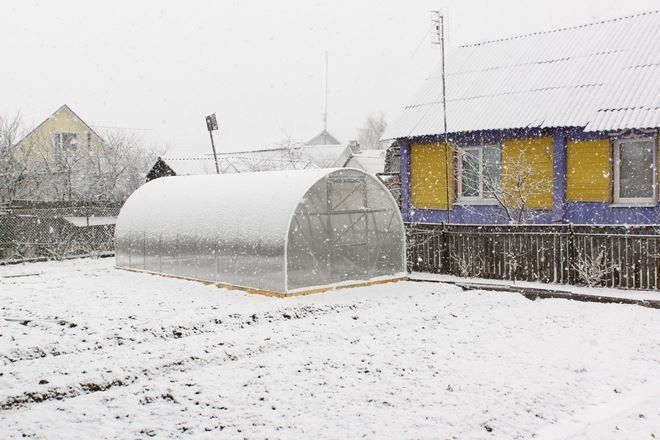

Pine or spruce spruce branches are also used to accumulate snow. Lay it in rows in places where there is usually little snow. When the spruce branches are covered with snow, they remove it and shift it. Do not forget about the snow on the branches of trees - it can be shaken directly onto the garden, making it easier for the tree to winter and creating a protective barrier for the plants.
unheated greenhouse the good thing is that it is partially protected from temperature extremes, and the snow is not blown out of it by the wind. True, and it does not get inside. Therefore, they begin to throw snow into the greenhouse in November, then it will not freeze, it will retain beneficial microflora and earthworms.
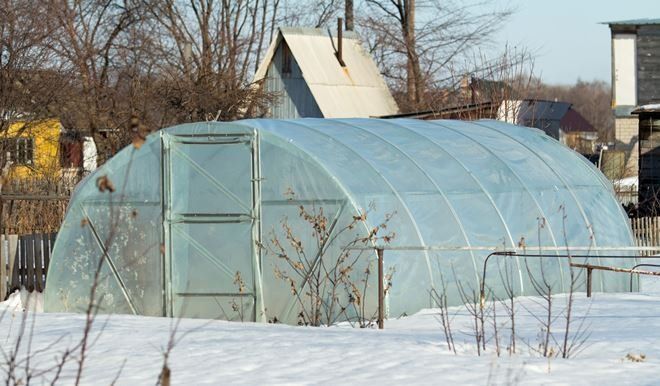
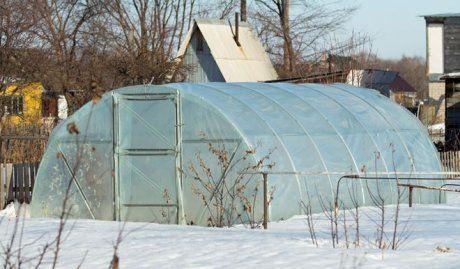
The greenhouse should be free of pathogens of fungi and pests. Otherwise, they will safely winter and, with fresh forces, will go on the attack in the spring.
Sometimes snow is thrown into the greenhouse in the spring. This helps the earth get the first supply of moisture in the new season. After all, water pipes in summer cottages do not start working immediately, and the land is already dry and requires watering.
How to save moisture in the soil in the warm season
It is possible to accumulate moisture in the soil without waiting for heavy snowfalls (which you may not even wait for). In the warm season, you can also take some measures to keep moisture in the ground.
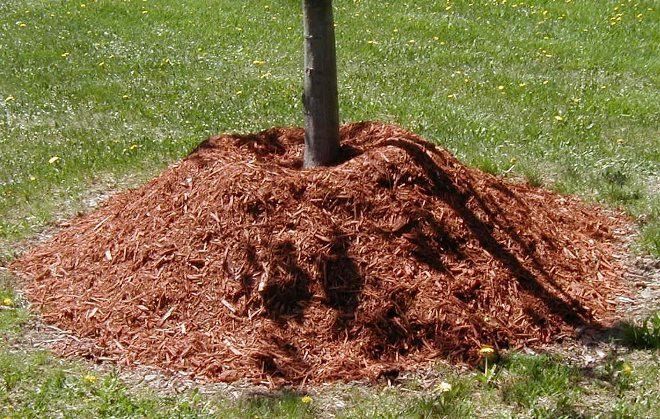
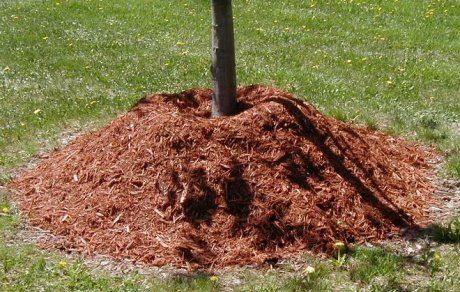
- Mulching. After the first spring loosening, the soil surface in the trunk circles is covered with a layer of straw manure, rotted straw, moss, peat, compost or other organic materials 8-10 cm thick. 10 cm must be retreated from the stem. A little earth is thrown on the mulch so that it is not carried by the wind . If the summer is dry, the mulch is left until mid-autumn. If it turned out to be rainy, and the trees slowed down, the fertilizer layer is removed at the end of August.
- loosening. This is the most reliable way to retain moisture in the soil after rain or watering. By loosening the top layer, you destroy the dry crust that has formed on the surface. It is recommended to loosen the soil under the trees at least 4-5 times during the summer. The beds with plants are loosened after each watering, simultaneously removing weeds.
- Film cover. Evaporation can be reduced by covering the plantings with non-woven material such as spunbond or geotextile. It is not recommended to use a plastic film, since it does not let in not only moisture, but also air. If there is no other option, then lift it from time to time to ventilate the plantings.
Conclusions:
- Snow retention is used in snowy but frosty winters, especially in the steppe and forest-steppe zones. It saves plants from freezing and allows you to increase the yield by 1.5-2 times.
- Melt water is more useful than spring water - it contains trace elements and nourishes the plant gradually. The cycle of its development is not broken.
- 1 cubic meter of snow gives from 50 to 250 liters of water.
- The easiest way to accumulate snow is to install shields and barriers, lay out spruce and pine spruce branches.
- Snow is thrown into greenhouses both in autumn and in spring (if any).
- In the warm season, moisture can be preserved by mulching, loosening and sheltering plantings under the film.
Now you know what snow accumulation is and how it helps to achieve an excellent harvest. The "winter coat" for plants itself falls to you from the sky, you just have to properly distribute it over the site.
Add to my collection

